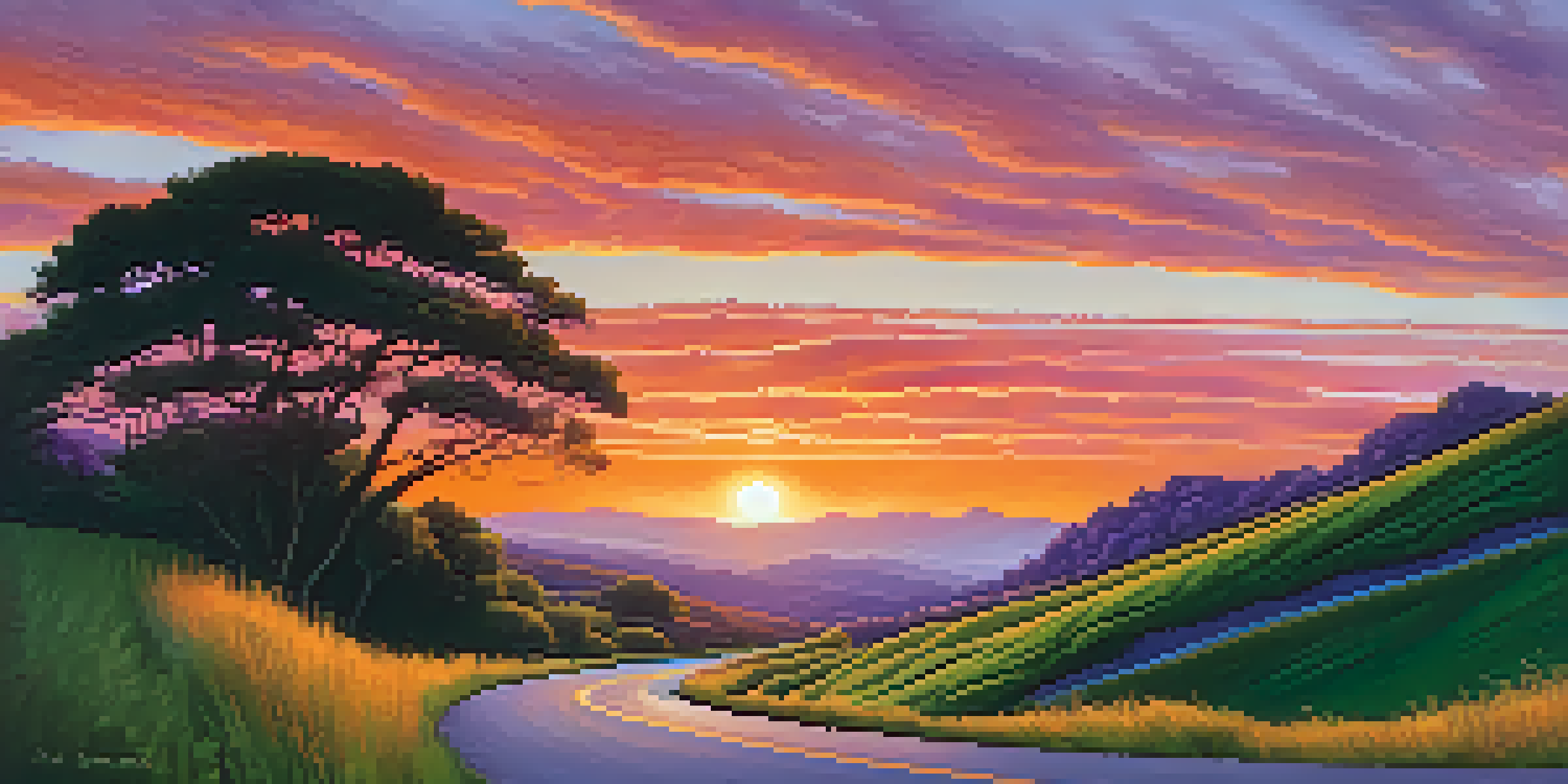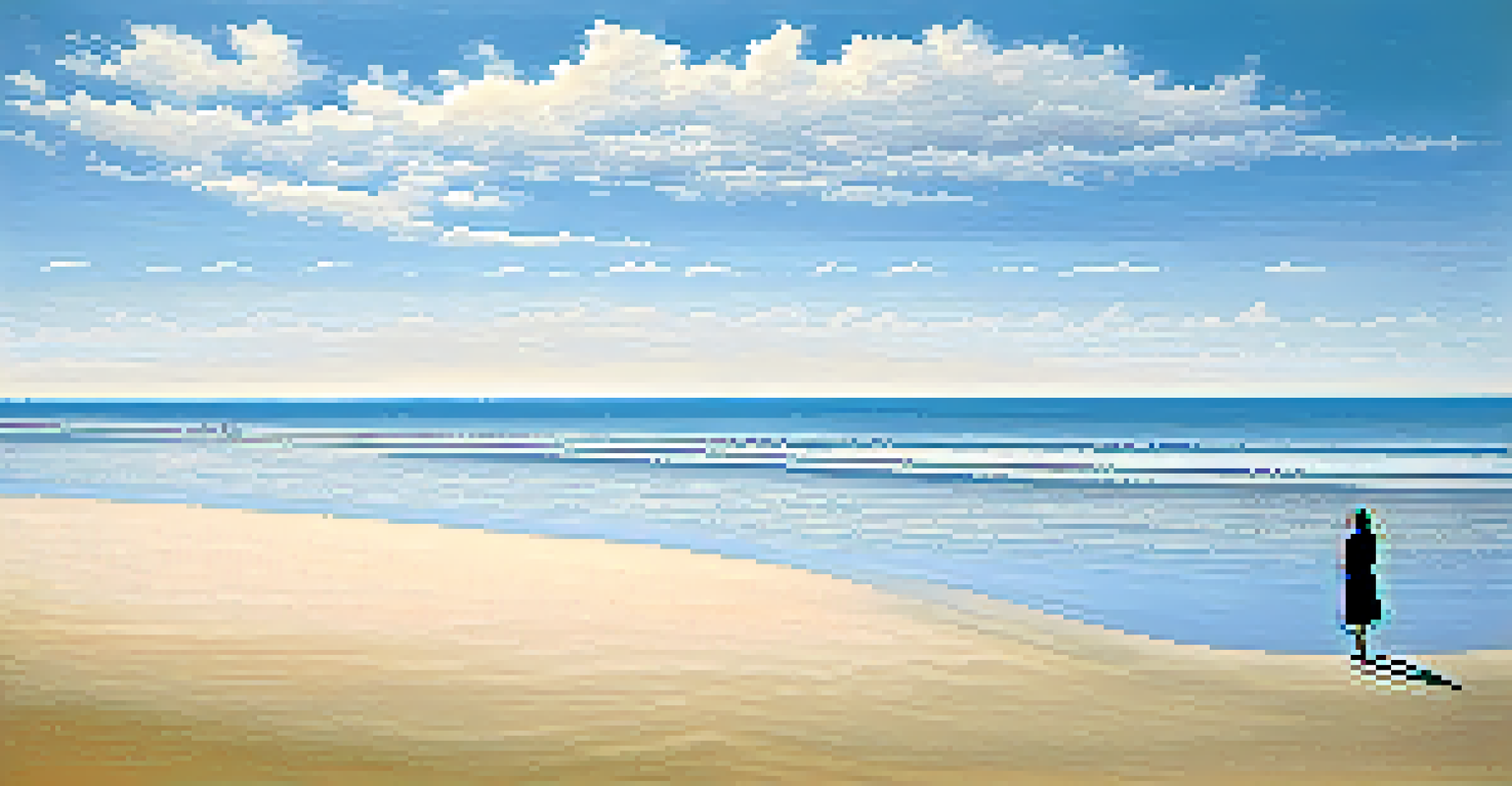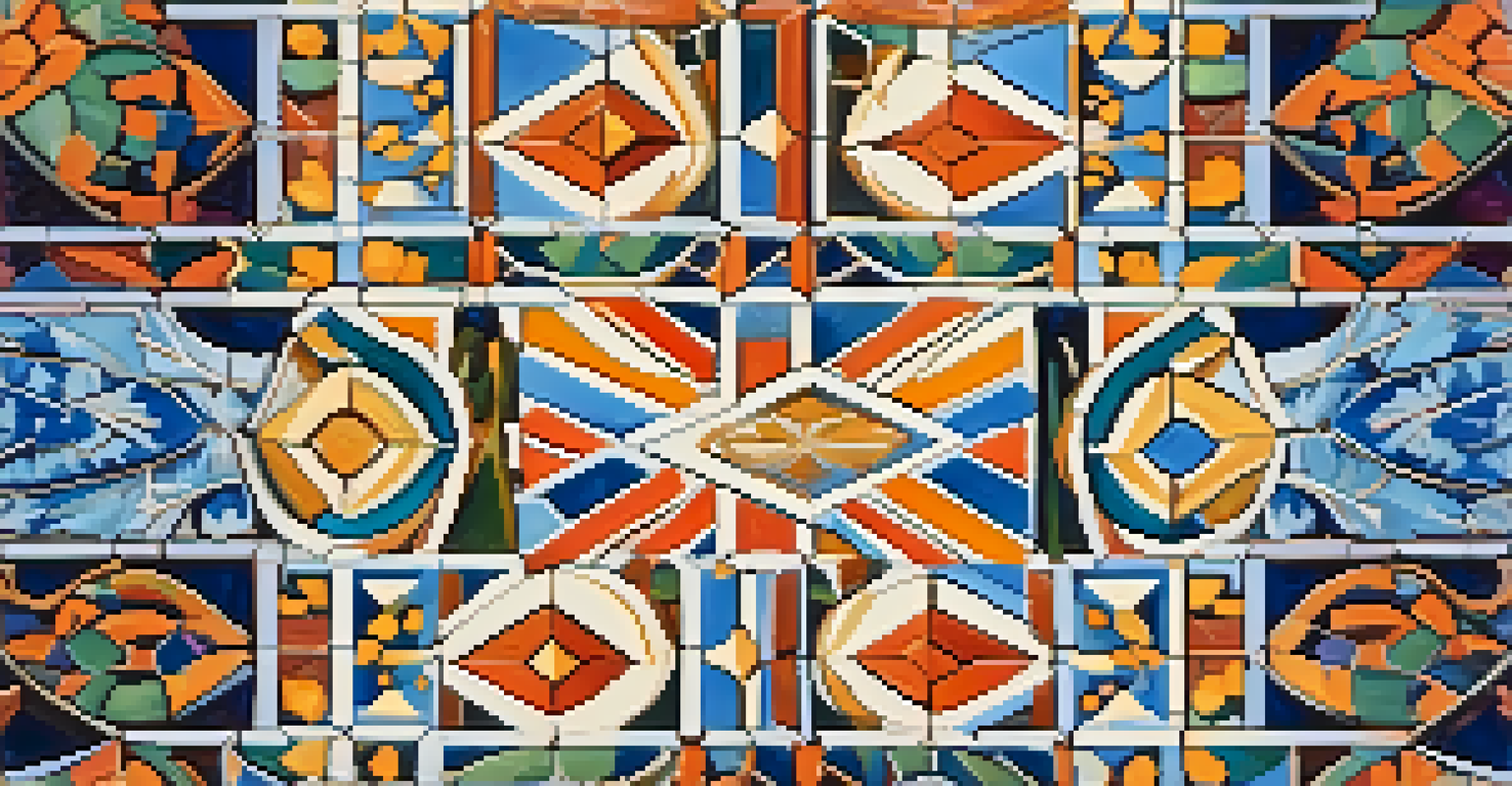The Art of Travel Photography: Composition Techniques

Understanding the Basics of Composition
At the heart of great travel photography lies strong composition. This refers to how the elements within a photo are arranged. By mastering composition, you can transform a simple snapshot into a captivating image that tells a story.
Composition is the strongest way to enhance your photography and tell a story with your images.
Think of composition as the framework of a house. Just like a house needs a solid foundation, your photo needs a structured layout to draw viewers in. Familiarizing yourself with the fundamental principles of composition can help you capture the essence of a place.
Elements like balance, alignment, and focal points play crucial roles. Take time to explore these basics, as they will serve as the building blocks for more advanced techniques in your photography journey.
The Rule of Thirds: A Photographer’s Best Friend
One of the most popular composition techniques is the Rule of Thirds. Imagine dividing your image into nine equal parts with two horizontal and two vertical lines. Placing your subject along these lines or at their intersections creates a more dynamic and engaging photo.

This technique helps to avoid the common pitfall of centering your subject, which can often lead to a static image. By shifting your focus off-center, you invite the viewer's eye to explore the entire frame, enhancing their experience.
Master Composition for Stunning Photos
Understanding composition principles like balance and focal points can elevate your travel photography from simple snapshots to captivating images.
As you travel, practice applying the Rule of Thirds in various settings, whether it's capturing a stunning landscape or a bustling market scene. With time, this technique can become second nature, elevating your travel photography.
Leading Lines: Guiding the Viewer’s Eye
Leading lines are an exciting technique that directs the viewer’s attention through your photos. These can be natural lines found in landscapes, roads, or even architectural features that draw the eye towards the subject.
A photograph is usually looked at – seldom looked into.
For example, imagine a winding road leading into a breathtaking sunset. By using the road as a leading line, you create a sense of depth and perspective, inviting viewers to imagine themselves on that journey.
Experiment with different angles and perspectives to find lines that guide the eye effectively. This technique not only adds interest to your images but also helps convey a sense of movement and adventure.
Framing: Creating a Context for Your Subject
Framing is another powerful composition technique that adds depth and context to your travel photos. By using elements in your environment to frame your subject, you create a visual anchor that draws attention.
For instance, consider capturing a stunning view through an archway or between branches of a tree. This method can make your subject stand out while simultaneously providing a glimpse of the surrounding area.
Use Techniques Like Leading Lines
Incorporating techniques such as leading lines and the Rule of Thirds can guide viewers' eyes and create more dynamic photographs.
As you explore new destinations, keep an eye out for natural frames. This technique can transform ordinary scenes into extraordinary compositions, allowing viewers to feel immersed in the moment.
Experimenting with Symmetry and Patterns
Symmetry and patterns can create striking images that captivate viewers. Symmetrical compositions are pleasing to the eye, often evoking a sense of harmony and balance, while patterns can add rhythm and texture.
Imagine standing in front of a beautifully tiled courtyard or a row of colorful umbrellas. Capturing these patterns not only showcases the beauty of your surroundings but also draws attention to details that might otherwise go unnoticed.
When traveling, take the time to seek out symmetry and patterns in your environment. This approach can help you create visually stunning images that stand out in a crowded field of travel photography.
Utilizing Negative Space for Impact
Negative space refers to the area surrounding your subject, and it can significantly enhance your composition. By intentionally leaving empty space in your frame, you can emphasize your subject and create a sense of simplicity.
For example, a lone person standing on a vast beach against a clear sky can convey feelings of solitude and tranquility. In this case, the negative space enhances the impact of the subject rather than detracting from it.
Enhance Images Through Post-Processing
Post-processing helps refine your travel photos by enhancing colors and lighting, ensuring your memories shine authentically.
As you compose your travel photos, consider how negative space can work for you. This technique encourages viewers to focus on your subject while evoking emotion and intrigue.
Capturing Movement: Adding Life to Your Photos
In travel photography, capturing movement can breathe life into your images. Whether it’s the bustle of a market or the gentle sway of trees in the wind, showcasing movement can evoke emotion and tell a story.
Consider using slower shutter speeds to create motion blur, which can add a sense of dynamism to your photos. Alternatively, freezing a moment in time can convey the energy of a scene, such as a dancer mid-performance.

Experimenting with various techniques for capturing movement can bring a new dimension to your travel photography. Embrace the vibrancy of life around you to create images that resonate with viewers.
Post-Processing: Enhancing Your Travel Photos
Post-processing is an essential step in refining your travel photos. This involves using editing software to enhance colors, adjust lighting, and crop images for better composition.
While it’s important to maintain the authenticity of your scene, a little editing can go a long way in highlighting the beauty of your photos. For instance, increasing contrast can make your colors pop, while adjusting exposure can bring out details hidden in shadows.
As you develop your editing skills, remember that less is often more. Strive for a natural look that enhances your images without overwhelming them, allowing your travel memories to shine through.